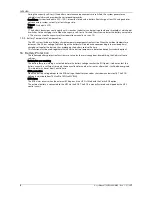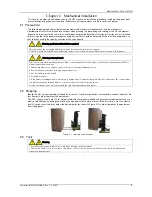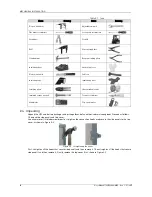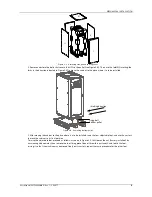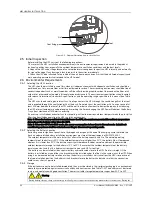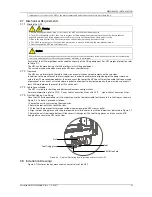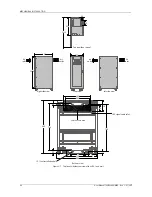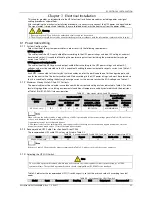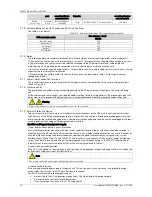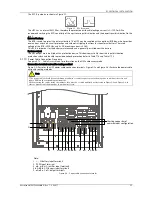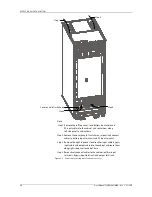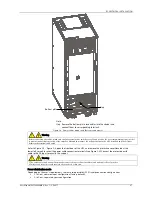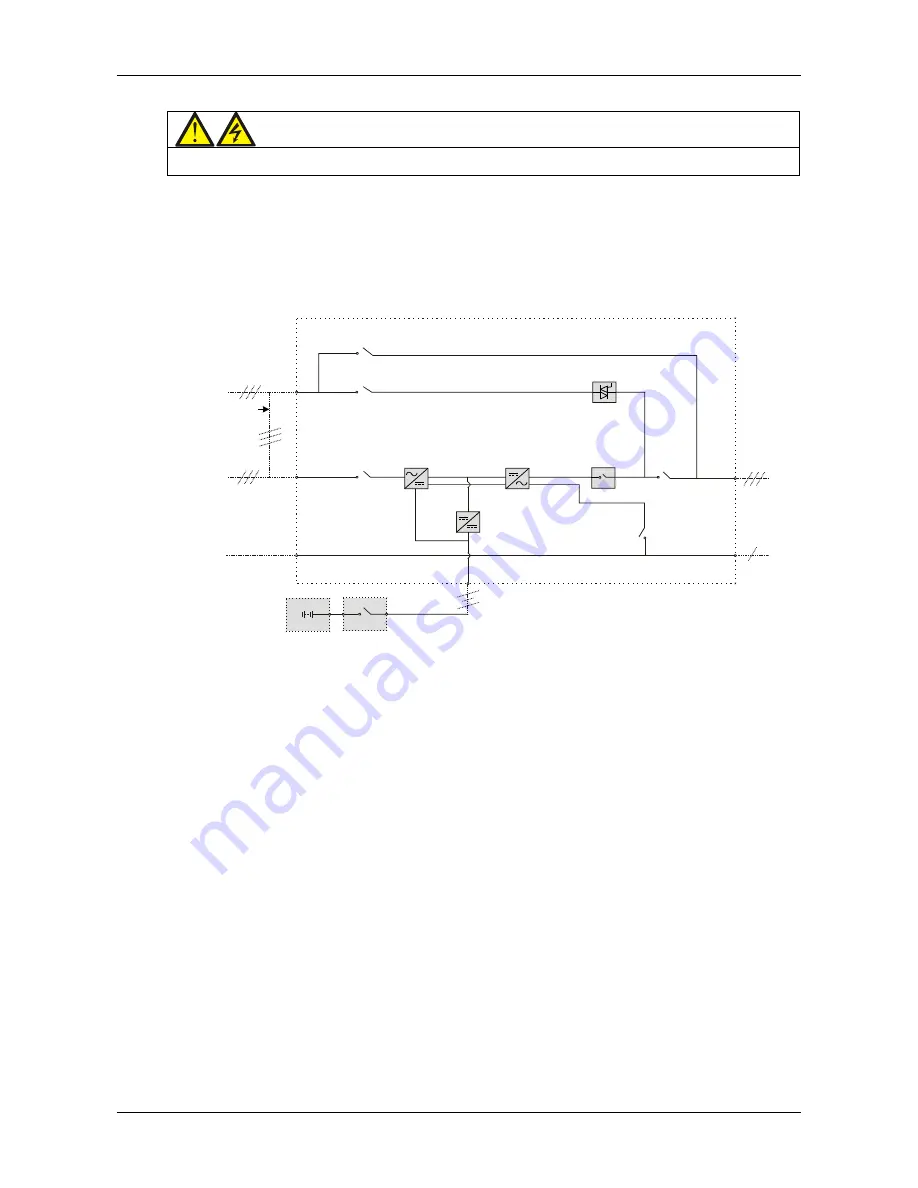
OVERVIEW
12
User Manual 10H52246UM60 - Rev. 1 - 01/2017
power to the loads. The maintenance bypass can be manually selected using the maintenance bypass switch, and
disconnected by turning the switch to OFF.
Warning
If the UPS system consists of two or more UPS modules, and the load capacity exceeds the single module capacity, do not
use the internal maintenance bypass switch.
1.2.4
UPS Power Supply Switch Configuration
Figure 1-2 illustrates the UPS module block diagram. The UPS may be used in separate bypass (where the Rectifier
and Bypass inputs are connected to independent power sources) and common input configurations. In the separate
bypass configuration, the static bypass and maintenance bypass share the same independent bypass power supply.
When a separate power source is not available, the bypass input switch (Q2) and rectifier input switch (Q1)
connections are linked together (factory fitted) so that the bypass input and rectifier input use mains power from
the same source.
During normal UPS operation, all the switches are closed, with the exception of the maintenance bypass switch Q3.
UPS output
Bypass input
Mains input
Neutral line input
Battery
BCB
Shorting copper
Rectifier
Inverter
Charger
DC
bus
Neutral line
Neutral line
UPS
Maintenance bypass switch Q3
Bypass input switch Q2
bar of common
input configuration
Rectifier input
Static switch
Automatic
inverter switch
Output switch Q5
Neutral line
output
switch Q1
switch Q6
Figure 1-2
UPS power supply switch configuration
1.2.5
Battery Circuit Breaker (BCB)
The external battery must be connected to the UPS via the BCB. The BCB box, which is available as an option, must
be installed close to the battery. The BCB is closed manually or electrically. The box includes an under-voltage trip
coil and, in the event of a battery under-voltage, the UPS control circuit sends a signal to this coil, which trips the
BCB. It also features a magnetic overload protection trip function.
1.3
Parallel System
Up to four UPS modules can be parallel-connected to form a parallel system thus increasing the capacity and
reliability of the system. The load is shared equally between the paralleled UPS modules.
In addition, two UPS modules or parallel systems can be used to create a dual bus system (LBS). The independent
outputs of each UPS module or parallel system are synchronized via the LBS cable, thus guaranteeing seamless load
transfer between the two systems.
1.3.1
Parallel System Features
1. In parallel systems the UPS hardware and software are exactly the same as for individual modules, and the parallel
configuration is achieved by means of software settings or via the control panel.
2. Parallel cables are connected in a ring, in order to guarantee system reliability and redundancy. The LBS cables
are connected between any two UPS modules in each bus. The intelligent parallel logic provides maximum flexibility,
for example, it permits the user to shut down, or start-up, the UPS modules in any order. Transfers between normal
mode and bypass mode of operation are seamless and self-recoverable, i.e., as soon as the overload is cleared, the
system reverts automatically to its original operating mode.
3. The user can view the total load applied to the parallel system on each individual UPS module LCD.
1.3.2
Parallel System Requirements
A group of paralleled modules behaves as if it were one large UPS with the advantage that it provides higher
reliability. In order to ensure that the load is shared evenly by all the modules, and that the system complies with the
applicable wiring regulations, the following requirements must be satisfied:
1. All UPS modules must be of the same rating and must be connected to the same bypass source.
2. The bypass and rectifier input sources must be connected to the same neutral line input terminal.
3. If any RCDs are installed they must be set-up appropriately and located upstream of the common neutral line
input terminal. Alternatively, such devices must monitor the protective earth current of the system. Refer to
Warning:
high earth leakage current
before
Contents
.

















